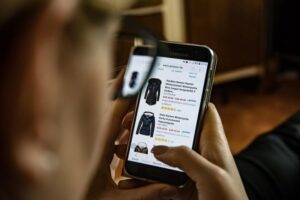Once you have reached a potential customer, or a prospect, turning them into a conversion can be tricky. One of the keys is that you need to reach them on a personal level in a way they will understand and connect with. The first step is building a relationship, but short of sitting down for a conversation with each of them, how do you do this?

Website personalization is one way to do this. As machine learning and artificial intelligence improve, we can use the huge amount of data we gather our customers using website analytics to reach them where they live, literally.
What is this data, and how do we use it? Here is a breakdown:
Table of Contents
Location
The data you get from web analytics can tell you where a customer comes from. Often, this reveals more information about them than you might originally think. The simple reason is that we have better demographic information related to each location in the world than we ever have before.
This is in part due to mapping done by Facebook, Google, and other large internet companies. Because their goal is to bring the internet to everyone worldwide, they have created maps with more detail than any yet to date.
This is information you can use to determine some basic facts about your prospect even before they give you their name or any other personal information. Their IP address can tell you their median income, whether they are likely to own a home or rent, the most common cell phone provider, average age, and more.
While this should not be used to target a specific customer, it can give you an idea of what to offer them first.
Using Location Data to Great Effect
A good example is an online shoe store. The shoes that are popular in New York are different than those that are popular in the Pacific Northwest. While Birkenstocks, Keens, and other brands have a following in the outdoorsy northwest (even with socks), they would not be nearly as acceptable in New York City.
Therefore, having a different landing page for each location simply makes sense. There are two ways to do this: you can set up a different landing page with a URL for each area you want to target, and have search engines redirect your web traffic to the site that most closely matches the location of their IP address. Use an online domain name search tool to make sure they are available, and set up landing pages at shoesnorthwest.com or shoesnewyork.com (to follow our example above).
The other way is to use web extensions based on region. While not as personal, it can be less expensive and easier to set up. This would look like shoes.com/newyork or shoes.com/northwest.
Either way, you are starting your customer’s journey with a personal touch based solely on their location.
Demographics
Is your customer proceeds through the marketing funnel, you will gain more information about them that you can use to speak to them more specifically. Once they have signed up for your newsletter, made their first purchase, or followed you on social media, you will know even more about them.
The Most Important Pieces of Demographics Data
This will include the information gathered from the location data above, but more specifically. Several factors will determine how exactly you should market to each customer.
- Age: Continuing with the example above, different shoes will appeal to specific age categories as well. You won’t sell a ton of skate style shoes to the 50 and over age bracket, nor will you sell as may Oxfords to the teen category.
- Income: Not surprisingly, this information does not always yield the results you would expect. Sometimes, middle and high-income customers look for bargains just as often as those in lower income brackets. The reverse can also be true, and price may not be a factor to some customers.
- Sex: Men and women shop for shoes (and almost anything else) differently, especially on the Internet. Men tend to know what they want and order accordingly, whereas women typically do more comparisons on both style and price. Each should be offered a different shopping experience.
While there are many other demographics that could play a role in your business depending on the product or service you offer, these are a good place to start. The ability to automate this process has gotten much simpler. However, we don’t want to stop here.
On Page Behavior
As a customer creates an account with your site or simply continues to shop there, you can analyze their behavior, what they click on, and what they appear to ignore. You can see this behavior using programs like Crazy Egg or others that create visual heatmaps showing where customers click, swipe, and even hover. If you have a skilled website designer, they can do the same thing using coding embedded in your pages.
Making Good Use of On Page Behavior
This is what we refer to as a customer’s on page behavior. You may not be able to see their entire browsing history on other sites, but you can predict how they will behave on yours. This tool can be useful not only for personalizing a customer’s journey but for evaluating overall site effectiveness.
For instance, if you have a link in a certain area of your landing pages, and none of your customers ever click on it, you can look at why by analyzing the link itself, moving it to an area where customers are clicking, or removing it altogether and using that space for something else.
While this may seem advanced, it is fairly simple to set up and can tell you a lot about your prospects and customers.
Shopping Behavior
Once your prospect becomes a customer, you should track their shopping behavior on your site. Do they simply log in, search for a specific item, click, and then purchase? Is this the customer that searches the clearance section of a specific type of shoe, and then purchases the lowest priced item in that category?
This data enables you to serve them specific ads based on this shopping behavior, allowing them to click through and purchase faster, or to see more sale items that might interest them.
Personalizing your web visitors journey may seem complex at first, but it is also extremely profitable and most often increases the lifetime value of that customer, causing them to come back repeatedly. In the end, it will save you valuable time, increase profits, and lower bounce rates.



